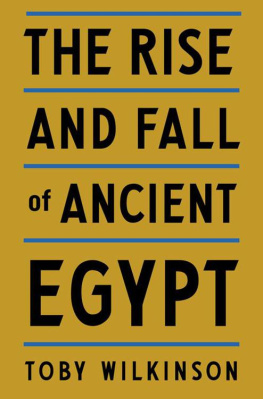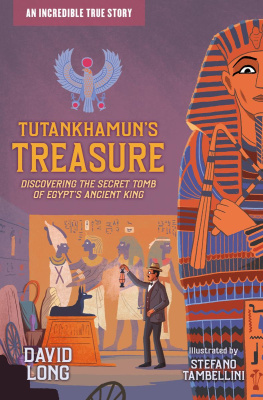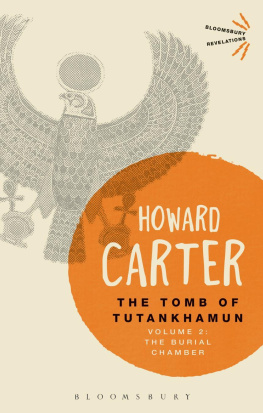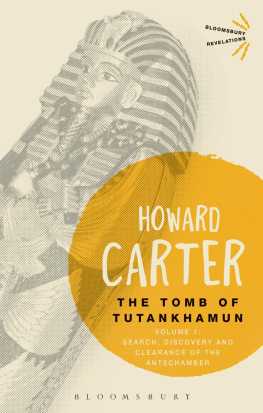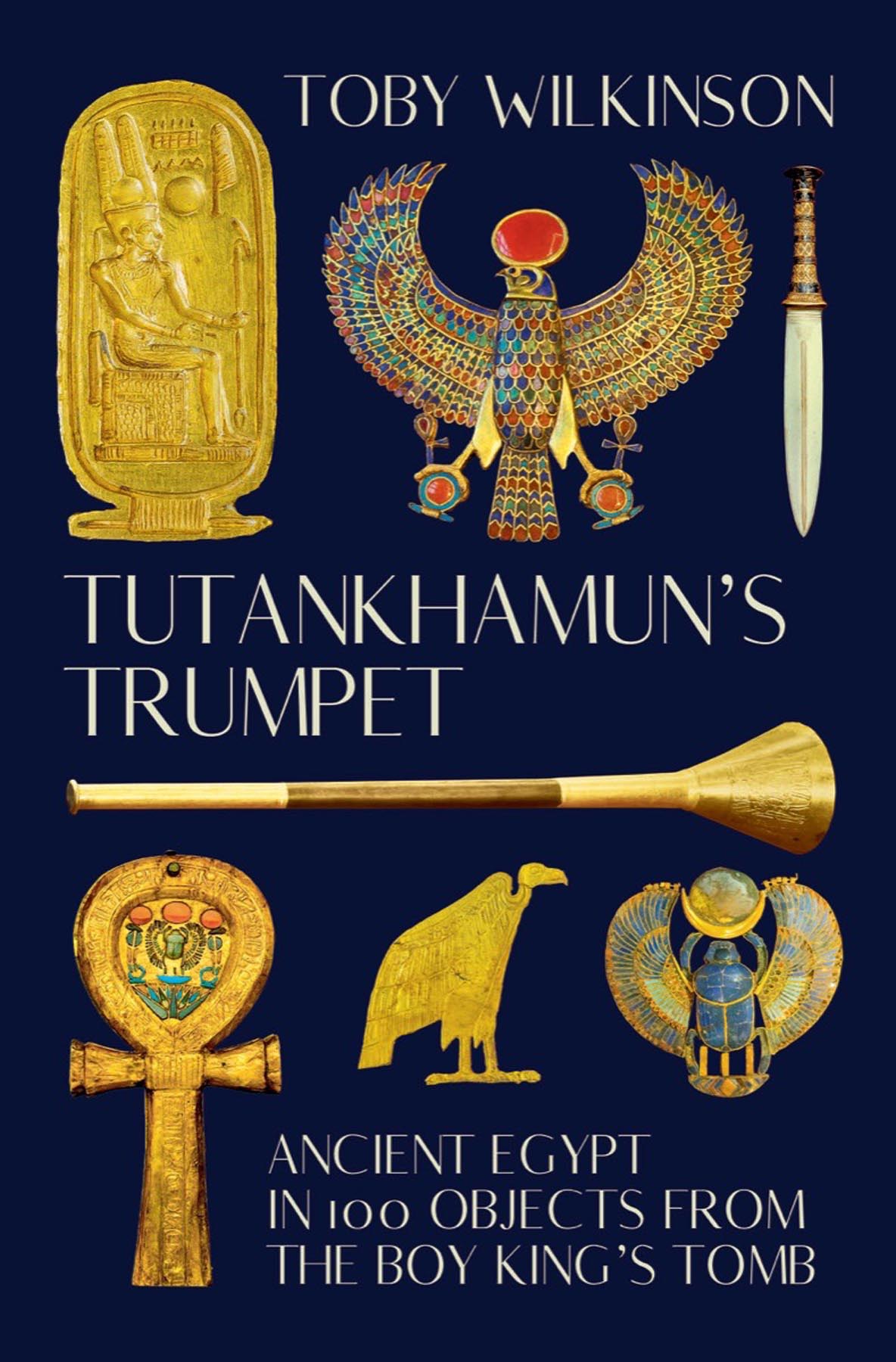Contents
Guide
Page List
TUTANKHAMUNS
TRUMPET
Ancient Egypt in 100 Objects
from the Boy Kings Tomb
Toby Wilkinson

This e-book contains some places that ask the reader to fill in questions or comments. Please keep pen and paper handy as you read this e-book so that you can complete the exercises within.
To the people of Egypt past, present and future.
CONTENTS
Colour plates
Unless otherwise stated, all objects are in the collection of the Museum of Egyptian Antiquities, Cairo, soon to be the Grand Egyptian Museum, Giza.
Figures in the text
Note: all dates before 664 BC are approximate
Dates | Period | Significant Developments |
700,0005000 BC | Palaeolithic Period | Earliest humans in the Nile Valley |
50002950 BC | Predynastic (Neolithic) Period |
29502575 BC | Early Dynastic Period (first to third dynasties) | Unification of Egypt |
25752125 BC | Old Kingdom or Pyramid Age (fourth to eighth dynasties) | Giza pyramids and Sphinx |
21252010 BC | First Intermediate Period (ninth to eleventh dynasties) | Civil war |
20101630 BC | Middle Kingdom (eleventh to thirteenth dynasties) | Annexation of Nubia |
16301539 BC | Second Intermediate Period (fourteenth to seventeenth dynasties) | Foreign occupation (Hyksos) |
15391069 BC | New Kingdom Eighteenth dynasty, 15391292 BC Thutmose III, 14791425 BC and Hatshepsut, 14731458 BC Amenhotep III, 13901353 BC Amenhotep IV, 13531336 BC Neferneferuaten, 13361332 BC Tutankhamun, 13321322 BC Ay, 13221319 BC Horemheb, 13191292 BC | Egyptian Empire Battle of Megiddo, April 1458 BC Foundation of Amarna, 1349 BC |
Nineteenth dynasty, 12921190 BC | Battle of Kadesh, May 1274 BC |
Twentieth dynasty, 11901069 BC | Tomb robberies begin |
1069657 BC | Third Intermediate Period (twenty-first to twenty-fifth dynasties) |
664332 BC | Late Period (twenty-sixth to thirty-first dynasties) |
332309 BC | Macedonian dynasty | Alexander the Great conquers Egypt |
30930 BC | Ptolemaic Period | Reign of Cleopatra (VII) |
30 BC AD 395 | Roman Period | Last hieroglyphic inscription, AD 394 |
395639 | Byzantine rule |
6391517 | Islamic rule |
15171914 | Ottoman rule | Decipherment of hieroglyphics, 1822 |
19141922 | British Protectorate |
19221953 | Kingdom of Egypt | Tutankhamuns tomb discovered, November 1922 |
1953 | Republic | Arab Spring, 2011 |



On 5 November 1922, in the Valley of the Kings, Egyptian labourers under the direction of the English archaeologist Howard Carter uncovered a series of steps cut into the valley floor. A few hours later, clearance revealed a descending staircase, terminating at a rubble wall that blocked further access. This was the moment for which Carter and his patron, Lord Carnarvon, had been toiling for fifteen long years in the heat and dust. Carter immediately sent a telegram to Carnarvon, who was 2,500 miles away at Highclere Castle, his stately home in southern England: At last have made wonderful discovery in Valley. A magnificent tomb with seals intact. Re-covered same for your arrival. Congratulations. When Carnarvon arrived in Luxor seventeen days later, he and Carter proceeded to clear the rubble wall and the corridor beyond. Eventually, on 26 November, they gained access to the royal tomb itself. Peering into the darkness with a lighted candle, Carter could not believe his eyes. Carnarvon, unable to bear the suspense any longer, asked, Can you see anything? Carters now-famous reply came back. Yes, yes, wonderful things.
What Carter and Carnarvon had discovered was, in every sense, a treasure trove, a hoard of precious objects fit for a king. In total, the grave goods interred with the boy pharaoh numbered over 5,000 objects, an unprecedented collection for a single discovery. Together, they comprised, in the words of Carnarvon himself, enough stuff to fill the whole Egyptian section upstairs of the B[ritish] M[useum]. They ranged from the mundane (the boy kings loincloth, shaving equipment and first aid kit) to the highly symbolic (his leopard-skin cloak, wooden paddles with which to row to the afterlife, and a ritual torch shaped like the hieroglyph for life). There were poignant objects with personal family resonance (the kings mummified, stillborn children and a lock of his grandmothers hair); food and drink for the next world (chickpeas and lentils, joints of meat, a basket of dates and wine from the royal vineyards). Practical tools (a scribal palette, a cubit rod and chisels) were buried alongside weapons (bows and arrows, fighting sticks, scimitars, leather scale armour and the kings prized chariots). Precious objects (a linen glove, a blue glass headrest, gold and silver staffs) demonstrate the sophistication of ancient Egyptian taste and craftsmanship, while exotic imports from distant lands (ebony and ivory from Nubia, and a jewel of Libyan desert glass, formed by an ancient meteorite strike) show the range of Egypts trading and diplomatic networks. Objects of daily domestic use (board games and oil lamps, make-up and furniture, baskets and sandals) provide a vivid picture of life in the Nile Valley over 3,000 years ago.
In the hundred years since the most famous archaeological discovery of all time, Tutankhamun has become the most famous ruler of ancient Egypt. A few objects from his tomb have achieved worldwide renown: his spectacular funerary mask, fashioned from beaten gold, is recognized as an icon perhaps the icon of pharaonic civilization. His gold coffins and royal throne are frequently illustrated in books on archaeology and ancient Egypt. However, most of the other myriad objects interred with him in the Valley of the Kings remain largely unknown, their stories untold.
To mark the centenary of Carter and Carnarvons great discovery, this book focuses on the objects buried with the boy pharaoh as the source material for a portrait of ancient Egypt its geography, history, culture and legacy. One hundred artefacts from the kings tomb, arranged in ten thematic groups, are allowed to speak again, as witnesses of the civilization that created them. The treasures of Tutankhamun bring us face to face with the culture of the pharaohs, its extraordinary development and its lasting impact.


